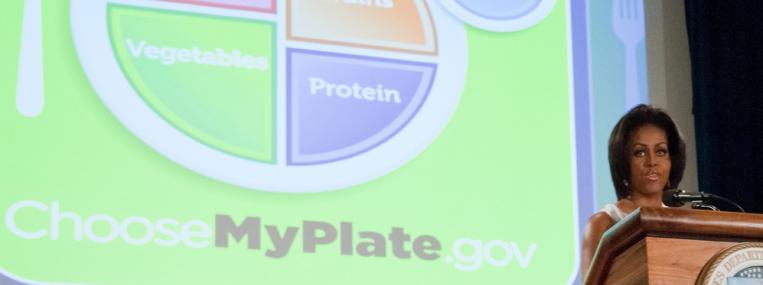
Obesity Up in Smoke
Being fat is a risk factor—not a disease caused by the food industry.

Being fat is a risk factor—not a disease caused by the food industry.
Greedy peddlers and producers of fatty food, beware: American public health advocates have declared war on obesity. Their battle plan: Ban Big Gulp sodas. Tax Oreos, Fritos, and other foods with empty calories. Most important, shower low-income neighborhoods, where obesity is prevalent, with farmers’ markets and supermarkets full of fresh fruits and vegetables.
It’s a progressive foodie’s dream. But Helen Lee, a researcher at the New York City–based social policy think tank MDRC, argues in Breakthrough, an online journal, that the antiobesity crusaders have adopted a flawed strategy. Public health experts are trying to fight fat the way they fought smoking—by blaming big business and unfavorable environments for a problem that, in reality, starts and ends with individual behavior.
The fat fighters warn that obesity is an epidemic, as if it were an infectious disease. Fudging definitions, they imply that some 60 percent of Americans are obese. The real rate is 34 percent.
Of that group, morbidly obese people run real health risks. But they constitute only four to six percent of the population. “For everyone else, obesity is not a disease but rather a risk factor.”
To rally public opposition to bloated waistlines, advocates consciously mimic the antitobacco model of the 1990s, under which activists attacked cigarette companies for preying on young consumers and blamed the industry for encouraging nicotine addiction.
The offensive of the 1990s barely moved the needle on the number of smokers in the United States, however. The rate dropped only six percentage points between 1990 and 2010.
Compare that with the impact of earlier antismoking campaigns. In the 1960s and ’70s, the U.S. government put a huge dent in the percentage of Americans who smoked by limiting cigarette advertisements and waging a robust public education campaign on the dangers of smoking.
But antiobesity campaigners decided to cast American eaters, specifically two demographics, as victims. “One was the innocent child, unable to resist the food industry’s predatory marketing tactics,” Lee writes. “The other was the low-income city dweller living in neighborhoods devoid of grocery stores and farmers’ markets in which the only dietary options were unhealthy ones.”
The victimhood narrative deprives people of agency. In reality, people shop where they want and eat what they please. “Most Americans, including the poor, typically travel beyond their neighborhoods to shop at the grocery stores associated with their class status,” Lee notes. Nor is it true that the poor can’t afford healthy foods; they choose not to buy them. “Lentils are as cheap as potatoes. Skim milk costs the same as whole milk.”
The poor don’t lack for supermarkets, either. Three recent studies, including one authored by Lee, “all found that low-income neighborhoods have at least as many and often more grocery stores and supermarkets than do wealthier communities.” More to the point, the studies “found no statistical relationship between the availability of healthy food . . . and lower risk of obesity development.”
Taste buds, not an environment of hidden persuaders, are what draw poor people to food packed with fat, salt, and sugar. “The poor choose their foods not mainly for their cheap prices and nutritional values, but for how good they taste,” write MIT economists Abhijit V. Banerjee and Esther Duflo in Poor Economics (2011), their study of global poverty. They note that George Orwell made a similar point long ago in The Road to Wigan Pier (1937): “When you are unemployed you don’t want to eat dull wholesome food. You want to eat something a little tasty. There is always some cheap pleasant thing to tempt you.”
Public health advocates dream of food bans—along the lines of smoking restrictions—that would eliminate such temptations. But it’s impossible to legislate sugary sodas and snacks full of empty calories out of existence.
What’s needed instead, Lee argues, is nothing less than the transformation of “larger life settings and socioeconomic circumstances that situate agency and habit setting.” People reshuffle their priorities and live healthier lives when they have access to education and good jobs. One way to jumpstart the process: Incorporate lessons on self-control and delayed gratification into school curricula, which can “show young people how to manage desires for unhealthy foods.”
Antiobesity advocates who ape antitobacco tactics overlook other basic differences between the two issues. While cigarettes are known to shave years off your life by causing lung cancer and other illnesses, the link between carrying a few extra pounds and bad health is fuzzy at best. “So far there is scant evidence that being moderately overweight has serious health consequences,” Lee notes.
In contrast to lung cancer, the ailments caused by obesity—such as diabetes and hypertension—are highly treatable. The problem for the poor is affordability and access to care. Little wonder that wealthy and educated people who are obese have lower mortality rates than their poor counterparts.
Ailments aside, exercise may prove to be more important than body weight in determining your health. “Men who are lean and unfit appear to have higher mortality than men who are obese and fit,” Lee writes of recent research.
Some public health experts see exercise as a distraction from their battle to control the American diet. When Michelle Obama launched her Let’s Move program to encourage physical fitness, nutritionist Marion Nestle frostily accused the first lady of having “given up on encouraging food companies to make healthier products and stop marketing junk foods to kids.”
But Lee doubts that Americans will beat obesity if they don’t learn to get moving and get smarter about the food they eat.
THE SOURCE: “The Making of the Obesity Epidemic” by Helen Lee, in Breakthrough, Spring 2013.